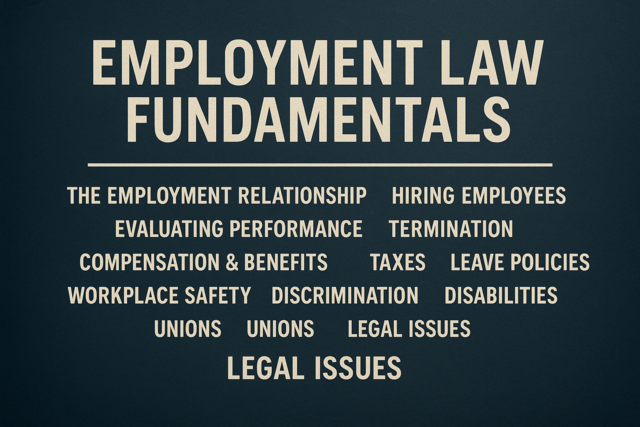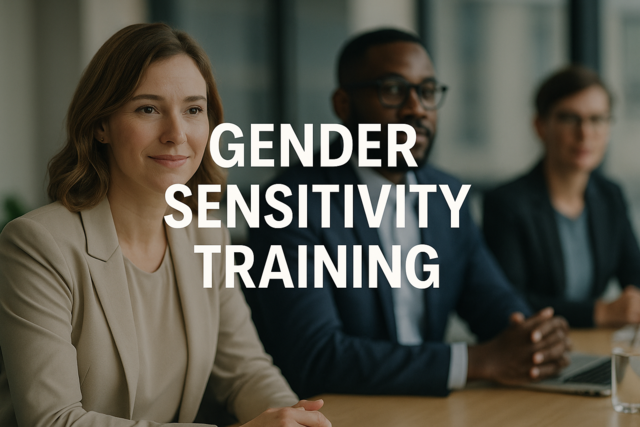This article will give you an overview of your tax responsibility to the Internal Revenue Service (IRS) but simply cannot go into enough detail to be comprehensive. A word of warning: While you may get advice from an IRS employee or agent, that advice could actually be wrong. This incorrect information will not prevent you from being assessed penalties and interest. It is actually cheaper in the long run to get the advice of a small business tax accountant.
Employer Identification Number
If your business is a sole proprietorship, you will not need an employee identification number (EIN); you may use your Social Security number. However, as soon as you hire one employee, even if it is a family member, you must apply to the IRS for an EIN, on Form SS-4, Application for an Employer Identification Number.
Federal Income Tax Withholding (FIT)
As an employer, you are required to withhold taxes for the federal government based on the information your employee put on his W-4 form and his income:
- employee's filing status (single, married filing jointly, married filing singly, etc.);
- number of dependents;
- amount the employee makes in wages.
You must keep the employee's W-4 on file. The following resource can help you with your record-keeping duties as an employer:
State Taxes
Federal Insurance Contributions Act
The withholdings under the Federal Insurance Contributions Act (FICA) are payroll taxes for Social Security benefits. This tax originated in 1935, when it was part of the Social Security program and was later transferred to the IRS tax code. This is used for old-age retirement, survivors, disability, and hospital insurance and is made up of two parts:
- Social Security
- Medicare
In 2009, the FICA taxes are collected from employees at the rate of 7.65 percent of their gross earnings up to an earnings limit of $106,800 for a maximum Social Security contribution of $6,621.60. There are no maximum contributions for Medicare.
The breakdown is 6.2 percent for Social Security, 1.45 percent for Medicare.
As the employer, you are required to match this amount at 7.65 percent on the gross earnings of each employee.
Periodic Deposits
The amount of money you withhold from your employees' paychecks must be deposited in an authorized financial institution, such as a bank, with the accompanying IRS coupons for such deposits. Instructions on how often you are to deposit these funds are included from the IRS. For most small businesses, monthly deposits are fine. Never, never, never use the tax withheld from payroll to pay your other bills.
While other debts may be forgiven if your company goes bankrupt, payroll taxes are never forgiven, and the penalties for not depositing the funds can be equal to the amount you were supposed to have deposited, plus the original amount.
Federal Self-Employment Taxes
This is not a payroll tax, but if you are a sole proprietor, you must pay these taxes. All of your independent contractors are required to pay self-employment tax. This is not your burden, but you may want to let them know their responsibility. This tax is the full percentage due on both the FICA requirements for the income you or the independent contractors receive. Unlike being an employee, where the employer pays half and the employee pays half, the sole proprietor is responsible for the full amount.
Currently the FICA tax rate is 15.3 percent. This amount is reported annually on your federal Schedule SE attached to your personal 1040. You may have to report and pay estimated taxes quarterly if you make enough. See IRS Publication 505, Tax Withholding and Estimated Tax,
Independent Contractors
Because independent contractors are not employees, you are not required to withhold anything from their pay. However, at the end of each year you must send them a Form 1099-MISC if you paid them $600 or more. They must file a W-9 with you with their Social Security number and you report the 1099 income paid to them to the IRS.
You are not required to pay their portion of FICA taxes. That is entirely their responsibility.
A Word about Bonuses and Gifts
If you reward your employees with a turkey during the holidays, you may take this as a business expense and you are not required to withhold anything from their pay. However, if you give them a cash bonus, this money is subject to their regular withholding. Again, this is your responsibility.
There are other tax considerations you may be responsible for, so do seek the advice of a tax accountant for professional advice. Once you understand what you are doing, you can take over. Or, you may prefer to have a bank or company provide payroll tax services for you.
OSHA was passed by Congress in 1970 and since then has developed into a comprehensive law that is designed to ensure a safe and hazard-free environment for workers. There are state OSHA laws in addition to the federal law. OSHA is administered and enforced by the Department of Labor.
Who is covered: Most everyone who employs one or more persons must comply with OSHA standards.
There are a few exemptions from OSHA compliance:
- if you are self-employed and have no employees;
- if your business is a farm where the only employees are family members;
- if your business is already regulated by federal safety laws, such as mining.
What OSHA requires:
- a workplace environment safe and free of hazards;
- employer-provided safety training regarding hazardous chemicals, as well as how to notify government administrators in case of a serious accident in the workplace and the mandates of keeping detailed safety records.
The Two Standards of OSHA
OSHA requires employers to comply with two separate safety standards:
General standards apply to all workplaces. The employer has a responsibility to provide a workplace that is free from recognized hazards that are likely to cause severe physical harm or even death.
- housekeeping;
- waste disposal;
- water for drinking and washing;
- toilets;
- temperature;
- noise;
- lighting;
- medical care within a reasonable distance or a trained first aid individual;
- fire extinguishers.
Inspections: OSHA inspectors have the authority to inspect, unannounced, any and all workplaces to ensure that they are compliant with the law. Most inspections, outside of construction and public utilities, are carried out as a result of a complaint or after a serious injury or death has occurred.
Most safety laws require any serious injury to an employee to be reported and medical records kept for 30 years after termination of that person's employment.
Posting, reporting, and records: All employers must post a "Job Safety and Health Protection" notice that is available through OSHA. If your state has a federally approved OSHA program, you may have to post the state notice instead.
Reporting a single death or a job-related accident requiring hospitalization involving three or more people must be reported within eight hours of the incident.
The employer must keep a log (OSHA Form 200) of all workplace injuries or illnesses, except those requiring only first aid.
Workers' rights: Workers have the right to complain to OSHA without fear of retaliation. Further, workers have the right to refuse to work without fear of termination or demotion if they believe working would be unsafe under current conditions.
Worksite consultations: Should you have any questions about whether your workplace is free of possible offenses and hazards, you are free to contact OSHA and request a worksite consultation. This is run exactly like an inspection, and possible violations will be pointed out without fear of receiving a citation. These are done free of charge. The OSHA inspector is very willing to work with you, the employer, to create a good and safe environment for your employees.
State OSHA laws: If your state has an approved OSHA program, it can take over the federal administration of the job. So far, 21 states have been approved for such enforcement. Those states are:
- Alaska
- Arizona
- California
- Hawaii
- Indiana
- Iowa,
- Kentucky
- Maryland
- Michigan
- Minnesota
- Nevada
- New Mexico
- North Carolina
- Oregon
- South Carolina
- Tennessee
- Utah
- Vermont
- Virginia
- Washington
- Wyoming
Workers' compensation is funded through insurance administered either by a private insurance company or a state fund. Each state has its own workers' compensation statute and the statutes vary widely. Some states require the employer to carry the insurance. Some states require employers to carry the insurance when they employ as few as three workers. Some states require that you post the employees' rights.
There are a couple of states where workers' compensation insurance is not mandatory and it is up to the employer to decide whether to carry it or not. Just remember, if you choose not to cover your employees and one is injured due to your negligence, intentional or not, the employee can sue you. You will not be able to use the employee's own carelessness as a defense.
Generally speaking, it is wise to carry workers' compensation insurance.
All wise employers will do everything they can to minimize accidents by emphasizing safety in the workplace. Even the most safety conscious employer can be subjected to workers' compensation claims. Not all claims involve a sudden injury such as a fall. Any injury that occurs in connection with work is a covered incident. Carpal tunnel syndrome is one such claim. Claims from stress-related illnesses such as emotional illness, heart conditions, lung disease, and stress-related digestive problems are becoming more and more common.
As with all other types of claims, as an employer, you may notretaliate in any way against an employee who has made a claim. You may not demote, fire, or otherwise punish an employee who has filed a workers' compensation claim.
Note: Independent contractors are typically not covered by your workers' compensation insurance.
Repetitive stress disorder and ergonomics: The study of ergonomics is an engineering discipline, often called "human factors engineering," that studies the effect of work environments and tasks on the employee. It studies the work-station setup, design, body posture, and the prevention of repetitive stress injuries, especially for people who work many hours on a computer.
Because of the increasing numbers of workers' compensation claims as a result of repetitive stress disorders such as carpal tunnel syndrome, the study of ergonomics has advanced. Employers should anticipate an increase in ergonomic litigation and expect federal and state safety standards to be adopted, so it is wise to do what you can to make your employees more comfortable as they work. One example of an ergonomic solution is the split keyboard. It has been proven that for people who spend a great deal of time at a keyboard, the use of the ergonomic split keyboard has significantly reduced the number of carpal tunnel syndrome reports.
Ergonomics can be applied in many working situations. Should you have a number of employees suffering from similar problems, it would be advantageous to you to commission a work-station study to see if there is anything you can do to improve the situation.
























